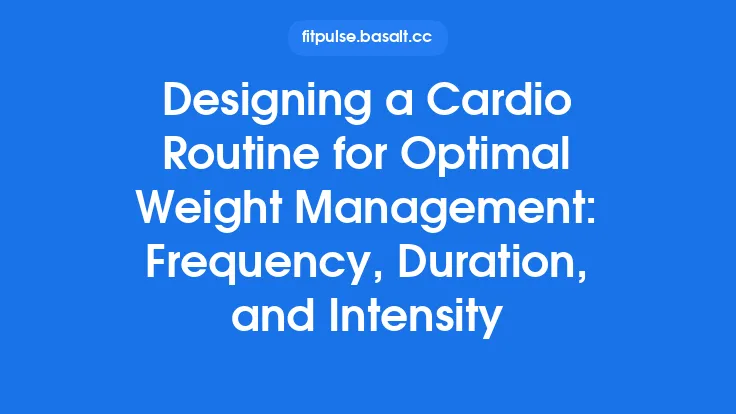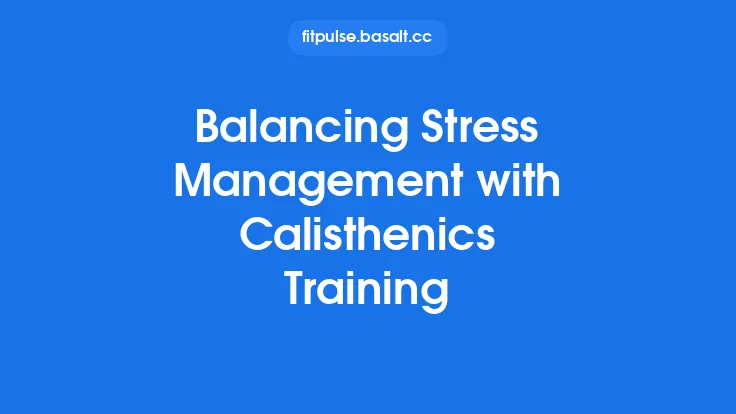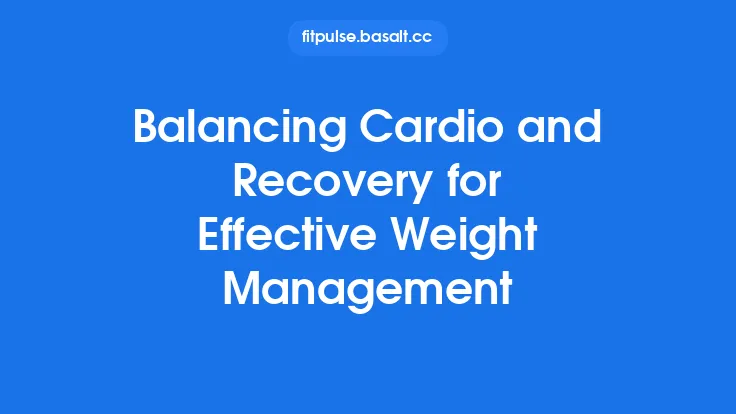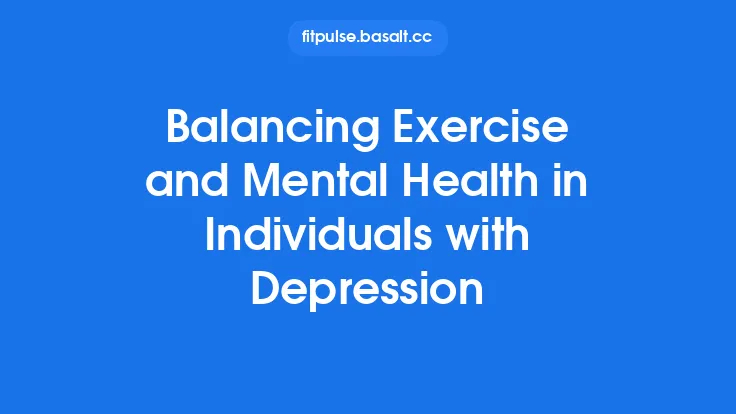Living with chronic pain often feels like walking a tightrope—too much activity can trigger flare‑ups, while too much rest can lead to deconditioning, stiffness, and a loss of independence. The key to long‑term comfort and function is a sustainable pain‑management plan that deliberately balances purposeful movement with restorative rest. Below is a step‑by‑step framework that integrates evidence‑based strategies, practical tools, and interdisciplinary resources to help you create a plan that can adapt as your needs evolve.
1. Conduct a Comprehensive Baseline Assessment
Before you can design a balanced schedule, you need a clear picture of where you stand.
| Domain | What to Evaluate | Tools & Resources |
|---|---|---|
| Pain Profile | Intensity, quality (sharp, throbbing, burning), triggers, diurnal patterns | Numeric Rating Scale (0‑10), PainDETECT questionnaire |
| Functional Capacity | Ability to perform ADLs (activities of daily living), gait, balance, fine motor tasks | Timed Up‑and‑Go (TUG), 6‑Minute Walk Test |
| Rest & Sleep Quality | Duration, continuity, perceived restfulness | Pittsburgh Sleep Quality Index (PSQI), actigraphy |
| Psychosocial Factors | Mood, stress, pain catastrophizing, social support | PHQ‑9, Pain Catastrophizing Scale (PCS) |
| Medical & Medication Review | Current analgesics, side‑effects, comorbidities | Medication reconciliation with pharmacist |
| Environmental Influences | Home/work ergonomics, footwear, lighting, temperature | Home safety checklist, ergonomic assessment |
A multidisciplinary team—physician, physical therapist, occupational therapist, psychologist, and dietitian—can help you gather and interpret this data. The assessment should be revisited every 3–6 months to capture changes.
2. Define Realistic, Measurable Goals
Goals give direction and motivation. Use the SMART framework (Specific, Measurable, Achievable, Relevant, Time‑bound).
Example Goal: “Increase the distance walked without pain from 200 m to 400 m over eight weeks, while maintaining a pain rating ≤ 4/10.”
Separate activity goals (e.g., “stand for 15 min while cooking”) from rest goals (e.g., “achieve 7–8 h of uninterrupted sleep each night”). Document them in a dedicated journal or digital app.
3. Structure Activity: The “Pacing” Principle
Pacing is the cornerstone of balancing movement and rest. It involves breaking tasks into manageable chunks, interspersed with planned recovery periods.
- Identify Core Activities – List daily tasks (e.g., showering, grocery shopping, gardening).
- Quantify Baseline Tolerance – Note how long you can perform each task before pain rises > 3/10.
- Create “Activity Blocks” – Divide tasks into segments that stay within your tolerance window (e.g., 5 min of standing, 2 min seated rest).
- Schedule Micro‑Breaks – Insert brief (30 s–2 min) rests after each block. Use a timer or smartwatch vibration to cue breaks.
- Gradual Progression – Once a block becomes comfortable, extend its duration by 10–15 % before adding another block.
Why it works: By staying below the pain “threshold,” you avoid the “boom‑bust” cycle where over‑exertion leads to severe flare‑ups and subsequent prolonged inactivity.
4. Optimize Rest: Quality Over Quantity
Rest is not merely “doing nothing.” It includes sleep hygiene, active recovery, and mental decompression.
a. Sleep Hygiene
- Keep a consistent bedtime and wake‑time, even on weekends.
- Create a dark, cool (≈ 18 °C) bedroom environment; consider blackout curtains and a white‑noise machine.
- Limit caffeine after 2 pm and avoid heavy meals within 2 h of bedtime.
- Use a supportive mattress and pillow that maintain neutral spinal alignment.
b. Active Recovery
During rest periods, engage in low‑intensity, non‑pain‑provoking activities that promote circulation:
- Gentle range‑of‑motion movements (e.g., ankle circles while seated).
- Heat or cold therapy applied for 15–20 min, depending on the pain pattern.
- Transcutaneous Electrical Nerve Stimulation (TENS) at a comfortable intensity for 20 min, if approved by your clinician.
c. Mental Decompression
Stress amplifies pain perception. Incorporate brief mental breaks that are distinct from “mind‑body” practices like meditation (which are covered in other articles). Simple techniques include:
- Box‑breathing (4‑4‑4‑4 seconds) for 2 min.
- Progressive muscle relaxation focusing on tension‑release in non‑painful muscle groups.
These can be performed during micro‑breaks without requiring extensive training.
5. Nutrition and Hydration for Pain Modulation
While not a substitute for medical therapy, certain dietary patterns can influence inflammatory pathways and tissue repair.
| Nutrient | Sources | Practical Tips |
|---|---|---|
| Omega‑3 fatty acids | Fatty fish (salmon, sardines), flaxseed, walnuts | Aim for 2 servings of fish per week; add ground flaxseed to oatmeal. |
| Antioxidants (vitamins C, E, polyphenols) | Berries, citrus, leafy greens, green tea | Include a colorful fruit/veg serving at each meal. |
| Magnesium | Pumpkin seeds, almonds, dark chocolate | Snack on a handful of nuts; consider a magnesium citrate supplement if deficient. |
| Adequate protein | Lean poultry, legumes, dairy, soy | 0.8–1.2 g/kg body weight daily to support muscle maintenance. |
| Hydration | Water, herbal teas | 30 ml/kg body weight per day; increase during hot weather or activity. |
A dietitian can tailor macronutrient ratios to your health status (e.g., diabetes, kidney disease) and help you track intake using food‑logging apps.
6. Pharmacologic and Interventional Supports
Medication should be part of a broader strategy, not the sole solution.
- Acetaminophen – First‑line for mild‑moderate pain; monitor liver function if used long‑term.
- NSAIDs – Effective for inflammatory pain; use the lowest effective dose, with gastro‑protective agents if needed.
- Adjuvant agents (e.g., gabapentinoids, low‑dose antidepressants) – Useful for neuropathic components; titrate under physician supervision.
- Topical agents (capsaicin, lidocaine patches) – Provide localized relief with minimal systemic exposure.
- Interventional options – Nerve blocks or radiofrequency ablation may be considered for refractory focal pain, coordinated by a pain specialist.
Regular medication reviews prevent polypharmacy, reduce side effects, and ensure alignment with activity/rest goals.
7. Environmental and Ergonomic Modifications
A well‑designed environment reduces unnecessary strain and facilitates smoother transitions between activity and rest.
- Home Layout – Keep frequently used items within arm’s reach; eliminate the need for excessive bending or twisting.
- Seating – Use chairs with lumbar support and adjustable height; consider a “sit‑stand” stool for tasks that require alternating postures.
- Flooring – Anti‑slip mats in wet areas; cushioned floor pads in workspaces where standing is prolonged.
- Assistive Devices – Long‑handled reachers, shower chairs, ergonomic kitchen tools (e.g., rocker knives).
- Workplace – Adjustable desks, monitor at eye level, footrests, and keyboard trays to maintain neutral wrist alignment.
A quick ergonomic audit (10–15 min) can reveal simple changes that dramatically lower pain triggers.
8. Leverage Technology for Tracking and Feedback
Digital tools help you stay accountable and fine‑tune the balance between movement and rest.
- Wearable Activity Monitors – Track steps, heart rate, and sedentary time; set alerts for prolonged inactivity.
- Sleep Trackers – Provide objective data on sleep duration, efficiency, and disturbances.
- Pain‑Logging Apps – Record pain intensity, location, and activity context; many generate trend graphs for clinician review.
- Reminder Systems – Smartphone alarms or smart‑home voice assistants can cue micro‑breaks and bedtime routines.
Choose platforms that sync with your healthcare team’s electronic records when possible, ensuring seamless communication.
9. Build a Support Network
Sustaining a balanced plan is easier when you have external encouragement.
- Family & Caregivers – Educate them on pacing principles so they can help structure daily routines.
- Peer Groups – Online forums or local chronic‑pain support groups provide shared experiences and practical tips.
- Professional Coaching – Health coaches or occupational therapists can conduct periodic “check‑ins” to adjust goals and troubleshoot barriers.
Documenting successes (e.g., “completed 30 min of gardening without pain increase”) and sharing them with your network reinforces positive behavior.
10. Review, Reflect, and Revise
A sustainable plan is dynamic, not static. Implement a monthly review cycle:
- Data Review – Examine activity logs, pain scores, sleep metrics, and medication usage.
- Goal Assessment – Determine if goals were met, exceeded, or need recalibration.
- Barrier Identification – Note any new stressors, environmental changes, or health events.
- Plan Adjustment – Modify activity block lengths, rest intervals, or introduce new ergonomic aids as needed.
- Professional Consultation – Share findings with your multidisciplinary team for expert input.
Document the review outcomes in a “Pain Management Journal” to create a longitudinal record that guides future decisions.
11. Anticipate and Manage Flare‑Ups
Even the best‑planned schedules encounter unexpected spikes. A flare‑up protocol minimizes disruption:
| Step | Action |
|---|---|
| 1. Early Detection | Recognize subtle warning signs (increased stiffness, reduced sleep quality). |
| 2. Immediate Rest | Pause activity, adopt a comfortable position, and apply heat or cold as appropriate. |
| 3. Medication Adjustment | Use prescribed “as‑needed” analgesics per the pain specialist’s instructions. |
| 4. Short‑Term Activity Modification | Reduce activity block duration by 30 % for 2–3 days. |
| 5. Re‑evaluation | If pain persists > 48 h despite interventions, contact your healthcare team. |
Having this protocol written down and accessible (e.g., on the fridge) reduces anxiety and promotes swift, appropriate action.
12. Cultivate Long‑Term Sustainability
The ultimate aim is a plan that feels natural rather than forced. Strategies to embed the balance into daily life include:
- Habit Stacking – Pair a new micro‑break cue with an existing routine (e.g., “after I brush my teeth, I’ll do a 2‑minute seated stretch”).
- Reward Systems – Celebrate milestones with non‑pain‑related treats (e.g., a favorite movie night).
- Self‑Compassion – Accept occasional setbacks without self‑criticism; view them as data points, not failures.
- Periodic “Reset” Days – Once a month, schedule a lighter day to allow the body to recover fully, reinforcing the rest component.
When the plan aligns with personal values—maintaining independence, enjoying hobbies, and preserving quality of life—it becomes a lasting part of your lifestyle.
Putting It All Together: A Sample Weekly Blueprint
| Day | Morning (Activity) | Mid‑Day (Rest/Recovery) | Evening (Activity) | Night (Sleep Prep) |
|---|---|---|---|---|
| Mon | 10 min gentle walking (2 min walk/1 min seated) | 15 min heat pack + 5 min deep‑breathing | 15 min kitchen tasks (standing blocks) | No screens after 9 pm, warm shower |
| Tue | 5 min seated upper‑body range‑of‑motion (3 sets) | 20 min nap (if needed) + TENS 20 min | 10 min garden watering (5 min stand/2 min sit) | Light protein snack, dim lights |
| Wed | 12 min walking (3 min walk/2 min rest) | 10 min mindfulness box‑breathing | 10 min reading while seated, posture check | Consistent bedtime, cool room |
| Thu | 8 min stair‑step (1 min step/1 min rest) | 15 min cold pack on knee + gentle ankle circles | 20 min household chores (10 min block/2 min rest) | Herbal tea, no caffeine after 3 pm |
| Fri | 10 min standing yoga poses (modified, no deep stretch) | 20 min massage with foam roller (non‑painful areas) | 15 min light housework (standing blocks) | Sleep journal entry |
| Sat | “Reset” day – 5 min seated breathing, optional short walk | Extended rest, optional social activity | Light activity (e.g., grocery trip with assistance) | Early bedtime |
| Sun | 15 min family walk (pacing as needed) | 30 min nap + heat pack | 10 min planning week’s activity blocks | Consistent sleep routine |
Adjust durations and intensities based on your personal assessment data.
Final Thoughts
Balancing activity and rest is not a one‑size‑fits‑all prescription; it is a personalized, evolving system that integrates physical, physiological, and psychosocial components. By grounding your plan in thorough assessment, realistic goal‑setting, structured pacing, high‑quality rest, supportive nutrition, judicious medication use, ergonomic optimization, technology‑enabled tracking, and a strong support network, you create a resilient framework that can withstand the inevitable ups and downs of chronic pain.
Remember: the goal is sustainable function and well‑being, not the elimination of every pain signal. With the strategies outlined above, you can navigate the tightrope with confidence, maintaining independence, vitality, and a higher quality of life for years to come.





